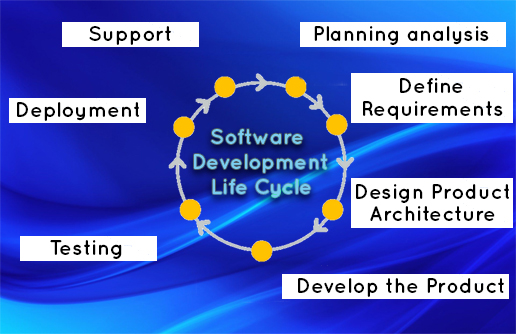Software Development Life Cycle is a process used in the software industry to design, develop and test high quality software. It’s a tried and tested process to develop software that meets the client’s needs and meets time and cost expectations.
This is a brief explanation of the stages.

Planning and Requirement Analysis
This is probably the most important stage as it sets the guidelines for the whole project. We therefore ensure that at least one of the Business Owners is present.
It plans the project approach, conducts project feasibility, technical feasibility and risk analysis.
Defining Requirements
The next step is to clearly define and document the product requirements and ensure that this is agreed with the client. This document contains all the product requirements to be designed and developed during the project.
Designing the Product Architecture
A Design Document Specification is produced that proposes the best design approach or approaches. This is then reviewed by the team in terms of risk assessment, product robustness, design modularity, budget and time constraints. The optimum design approach is chosen.
Developing the Product
This is the stage where development starts, and the product is built. If the preceding stages are completed well, the product will pass QA testing well. Standard coding guidelines must be followed. The programming language is chosen with respect to the type of software being developed.
Testing the Product
Although testing is conducted at all stages, this stage conducts testing at both the module as well as the system level.
Deployment or Implementation
Once the product is tested and ready to be deployed it is released formally and assigned a version number. Once deployed, it undergoes further testing on the Live platform. In the unlikely event of a test failure at this stage, it is fed back to the development team and undergoes the same path as before, until it passes.
Support
Depending on the contract signed between the client and Trident, Trident will ensure that due to changing needs over time, components and aspects of the product continue to meet those changes.
